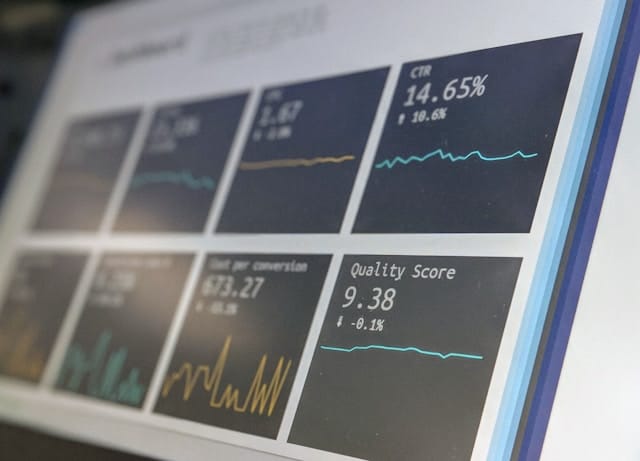WordPress SEO title optimization is crucial for online visibility. This article presents 11 expert insights on common title mistakes and their solutions. Learn how to craft effective, keyword-rich titles that boost your site’s search engine performance.
Table of Contents
Balance Creativity with Keyword Relevance
One mistake I made when changing my WordPress SEO title was focusing too much on creativity and not enough on keyword relevance. I tried to write a catchy title that sounded great but didn’t include the primary keyword users were actually searching for.
As a result, the page’s ranking dropped because it no longer aligned with user intent. I corrected it by researching the exact keywords my audience used, then rewriting the SEO title to include those terms naturally while still maintaining clarity and appeal.
This taught me that balancing creativity with SEO fundamentals is crucial—visibility comes first, and engagement follows.
Dewi Saklina, SEO Content Writer, Explainerd
Maintain Consistency in SEO Title Changes
One early mistake was changing WordPress SEO titles frequently without considering the impact on existing rankings or user expectations. I sometimes over-optimized or made them too generic. I learned that consistency and relevance are key. We corrected this by carefully researching keywords and user intent before making changes, then tracking performance in Google Search Console. It’s crucial to check how titles actually display in search results, ensuring they’re engaging and accurately reflect the content, not just keyword-stuffed.
Michael Lazar, CEO, Content Author
Avoid Keyword Stuffing in Title Tags
One significant mistake we made when changing a WordPress SEO title was falling into the trap of over-optimization, specifically keyword stuffing. In an effort to be comprehensive, we crammed too many keywords into a single title tag, thinking it would help us rank for everything. For example, a title meant for “best VPNs” might have become “Best VPNs – Secure VPN Service – Fast VPNs for Streaming – Top VPN Providers.” While the intent was good, the result was a clunky, unnatural title that likely confused both users and search engines, making the page less appealing in search results.
We corrected this by simplifying and focusing. We reviewed the page’s primary target keyword and audience intent, then crafted a concise, compelling title that included that main keyword naturally and conveyed clear value. The lesson learned was profound: clarity and user experience should always trump keyword density in SEO titles. A well-crafted title that accurately describes the page’s content and entices clicks will always outperform one that’s artificially stuffed. It reinforced that while keywords are important, they must be used intelligently and serve the user first, with search engines then rewarding that user-centric approach.
Michael Gargiulo, Founder, CEO, VPN.com
Prioritize Concise Titles with Front-Loaded Keywords
At one point, I made titles excessively long with keywords appearing at the end instead of the beginning. This negatively impacted SEO ranking. Lesson learned. I rewrote the titles, ensuring they were short with keywords at the front.
Gene Armstrong, Agency Founder, Web Developer, SEO Expert, Happy Website Design
Focus on Clarity Instead of Gimmicks
One mistake I made early on was trying to boost click-through rates by stuffing emojis and special characters into WordPress SEO titles. It looked catchy in search results, but it tanked consistency and diluted the message. The titles weren’t aligned with user intent, and over time I noticed rankings slipping for high-value pages.
I corrected it by stripping things back and focusing on clarity, keywords, and what the user is actually searching for. Once I wrote titles that matched intent and promised value (rather than trying to grab attention with gimmicks), CTR improved naturally. Lesson learned: optimize for humans and search engines, not novelty.
Blake Smith, SEO Consultant, Blake Smith Consulting
Align URL Slugs with Updated Titles
One mistake I made when changing my WordPress SEO title was not adjusting the URL slug to reflect the updated title. I realized later that the old URL wasn’t as keyword-optimized as the new title, which led to a slight drop in search engine rankings. To fix it, I created a 301 redirect from the old URL to the new one and made sure the slug aligned with my updated target keywords. This taught me to always review the full URL structure when making SEO changes, not just the title and meta description, to ensure everything is optimized for both users and search engines.
Nikita Sherbina, Co-Founder & CEO, AIScreen
Prevent Duplicate H1 Tags Across Pages
The classic blunder is swapping a catchy marketing slogan for your SEO title and forgetting that WordPress auto-generates a duplicate H1. This tells Google that every page shares the same primary keyword. I made this mistake on a client site and watched impressions plummet while cannibalization warnings lit up Search Console like a Vegas marquee.
The fix was both technical and editorial:
- Restore unique, intent-matched titles with Yoast’s dynamic variables
- Remove rogue H1 echoes in the theme header
- Trigger an instant recrawl so corrected metadata propagated before revenue felt the impact
Our post-mortem audit paired each URL with a fresh title formula and a 60-day CTR tracker. We combine the expertise of professional writers with the precision of AI tools to deliver high-impact, search-optimized content that resonates with real people. If we haven’t shown clear progress after six months, we continue optimizing at no extra cost until results improve.
Bottom line: treat your title tag like a product SKU—unique, descriptive, and mapped to search intent—and you’ll avoid the traffic-draining déjà vu I learned from the hard way. This relentless attention to detail is precisely how Scale by SEO helps you rank higher, get found faster, and turn search into growth.
Wayne Lowry, CEO, Scale By SEO
Craft Natural Titles That Promise Value
One mistake I made early on was stuffing the SEO title with too many keywords, thinking it would boost rankings. For example, I changed a title from “How to Start a Blog” to “Start a Blog | Blogging Tips | Make Money Blogging | Blog for Beginners”. It looked like keyword soup — and Google didn’t like it. Neither did users.
What happened? Click-throughs dropped. Google rewrote the title in SERPs anyway. And even though I was ranking, people weren’t clicking because the title felt robotic.
How I fixed it: I went back to a more natural, curiosity-driven format, like “How to Start a Blog (Even If You’re Not Techy)”. Still keyword-rich, but conversational. CTR improved almost immediately.
Lesson? Write for humans first, Google second. A good title should feel like a promise, not a list of keywords.
Eugene Leow Zhao Wei, Director, Marketing Agency Singapore
Manually Optimize Titles for Important Pages
It’s not something I did, but something I saw other SEOs doing: relying too much on SEO tools or plugins to decide for them what’s the best title. I highly recommend manual work for important pages. Use Google NLP demo, look at clicks data for the top 30 results and which title tags are getting more clicks, and learn from that.
Sara Taher, SEO Analyst
Customize Titles Beyond Default Plugin Suggestions
The greatest error you can make with a Title Tag on WordPress is leaving it defaulted. Meta Title Tags are the perfect place to give the broadest keyword possible relating to the page. Doing this provides the opportunity to include other keyword specificities and variations in the subsequent tags (meta description, headings, internal links, etc.). Default Title Tags (such as “Home”, “About”, “Contact”) without including your industry, service offering, or brand name leave Search Engines to make an assumption about the page’s content. You want to use queries that accurately reflect your page’s purpose.
When the correct titles are in place, you can rest assured that the intent of your pages is being communicated to search engines and users with clarity.
(Assuming Google isn’t rewriting them anyway ;))
Victor Romo, Founder & Search Consultant, Scale With Search

This is Muhammad Asad. I like to play table tennis and love Digital Marketing and SEO. I have 7+ years of SEO experience. I would love to chat, discuss or break down a problem.

